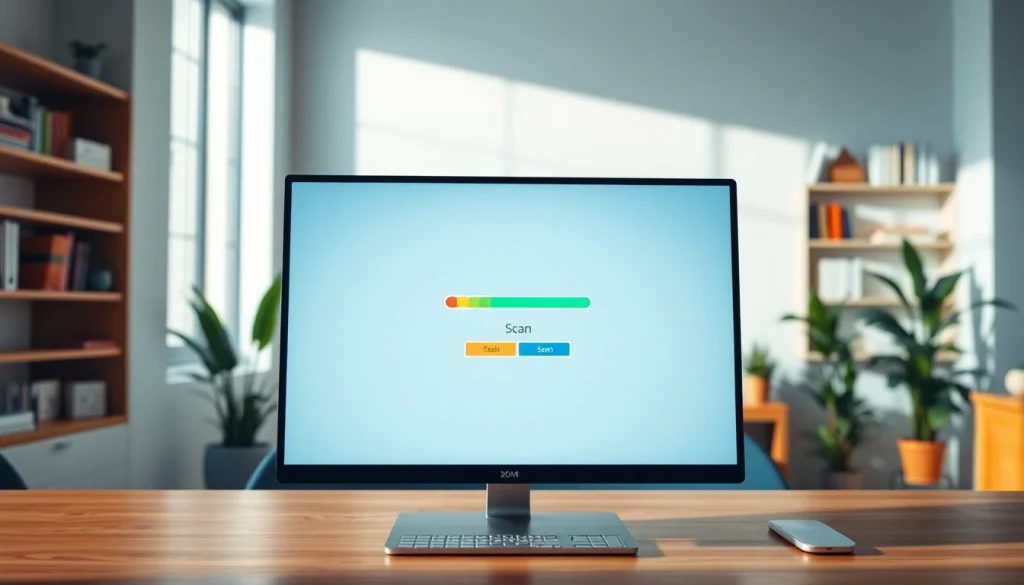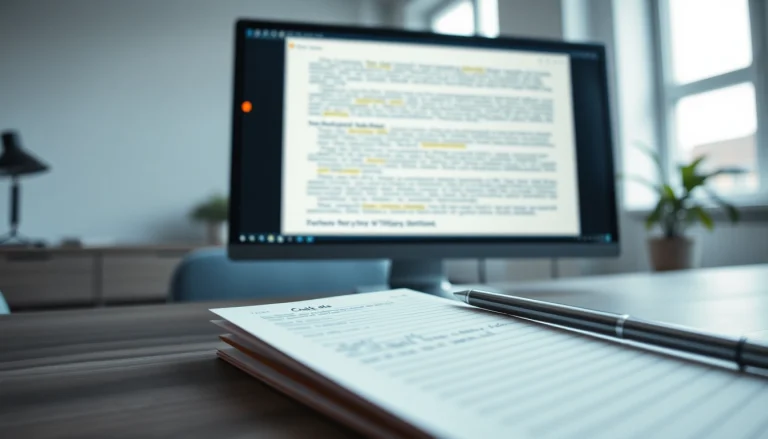
Understanding Plagiarism and Its Implications
What Is Plagiarism?
Plagiarism, simply put, is the act of using someone else’s work, ideas, or expressions without giving proper credit. This can occur in various forms, including direct copying of text, paraphrasing without acknowledgment, or presenting someone else’s work as your own. In an era where information is vast and access to digital content is instantaneous, understanding the nuances of plagiarism has become crucial for students, educators, and professionals alike. By being proactive in identifying instances of plagiarism using tools like a plagiarism detector, users can uphold academic and professional integrity.
Types of Plagiarism
There are several specific types of plagiarism that one should be aware of:
- Direct Plagiarism: Copying text word-for-word from a source without citation.
- Self-Plagiarism: Reusing one’s previous work without acknowledgment, often seen in academic contexts.
- Patchwork Plagiarism: Combining language and ideas from multiple sources without proper attribution.
- Accidental Plagiarism: Unintentionally neglecting citation or paraphrasing too closely to the original source.
- Complete Plagiarism: Submitting someone else’s work in its entirety as one’s own.
The Consequences of Plagiarism
Plagiarism can result in serious repercussions in both academic and professional settings. Academic institutions typically respond to plagiarism with penalties that can include failing grades, suspension, or expulsion. In professional contexts, plagiarism could lead to damaged reputations, legal consequences, and loss of employment. Beyond formal penalties, the ethical implications of plagiarism can undermine the trust and credibility of the individual involved, jeopardizing future opportunities.
The Importance of Using a Plagiarism Detector
Academic Honesty and Integrity
Maintaining academic honesty is fundamental to the integrity of educational institutions. A plagiarism detector serves as an essential tool in fostering an environment of original thought and ethical research practices. By regularly checking work for plagiarism, students can avoid potential pitfalls and ensure that they submit assignments that reflect their own understanding and contributions.
Benefits of Regular Checks
Utilizing a plagiarism detector offers several benefits beyond merely avoiding penalties:
- Improved Writing Skills: Regular use of a plagiarism detector can help writers identify areas of weakness in their work, leading to better adherence to original expression and thought.
- Enhanced Research Abilities: By understanding how to cite and paraphrase correctly, users can improve their overall research skills, which are vital in both academic and professional arenas.
- Time Efficiency: Detecting potential plagiarism early allows for timely revisions, saving time and effort in the long run.
Case Studies of Plagiarism Detection
Numerous case studies demonstrate the effectiveness of plagiarism detectors. For instance, many universities have adopted tools to check student submissions against large databases of existing texts. In one notable case, a university implemented a plagiarism detection software that led to a 25% reduction in instances of academic misconduct within a year, thereby reinforcing the importance of originality among students.
Features to Look for in a Plagiarism Detector
Accuracy and Reliability
The primary function of a plagiarism detector is to provide accurate results. A reliable plagiarism checker should compare submissions against a vast database of online and offline texts, ensuring thorough coverage. Some advanced detectors also utilize artificial intelligence to analyze context, further enhancing accuracy.
User-Friendly Interface
A well-designed user interface not only enhances usability but also encourages frequent use. Look for features like easy navigation, straightforward reporting formats, and clear instructions on how to submit documents. A detector that is easy to access and understand will be more readily adopted by both students and professionals.
Additional Tools for Writers
Many plagiarism detectors offer supplementary features that can be beneficial for writers. Tools such as grammar checkers, citation generators, and AI writing assistants can further refine the writing process. By combining these features with plagiarism detection, users can enhance overall writing quality.
How to Effectively Use a Plagiarism Detector
Step-by-Step Guide
To ensure effective use of a plagiarism detector, follow these steps:
- Select a reliable plagiarism detection tool: Choose a tool that suits your specific needs, whether for academic papers, professional reports, or creative writing.
- Prepare your document: Ensure your text is formatted correctly and free from unnecessary errors that might affect detection results.
- Submit the text: Use the plagiarism detector’s interface to submit your document, following the instructions for file formats and submission limits.
- Review the report: Analyze the detection results carefully, paying attention to highlighted sections and suggested sources for appropriate citations.
- Make revisions as necessary: Address any instances of detected plagiarism by correcting or properly citing the content.
Common Mistakes to Avoid
When using a plagiarism detector, users often make several common mistakes, including:
- Not checking multiple times: One pass may not catch everything, particularly if revisions have been made.
- Ignoring the context: Understanding the significance of detected matches is crucial; not all matches indicate plagiarism.
- Forgetting to cite properly: Even if content is paraphrased, failing to credit the source leads to unintentional plagiarism.
Interpreting Detection Results
The detection results can sometimes be overwhelming. Here are some tips to help interpret them:
- Understand matching percentages: A high percentage of matches may warrant a closer examination, while a low percentage could indicate acceptable levels of citation.
- Evaluate the sources: Identify whether the matches are from credible sources; knowing the origins of the matched content can inform your revision strategy.
- Consult additional resources: If in doubt, consider seeking guidance from professors or writing centers to understand best practices in citation.
Future Trends in Plagiarism Detection Technology
AI and Machine Learning Advances
The landscape of plagiarism detection is rapidly evolving, particularly with advancements in artificial intelligence (AI) and machine learning. These technologies allow for more nuanced understanding of text by analyzing context and semantics. Future plagiarism detectors will likely incorporate deeper learning algorithms, making detection even more precise and efficient.
Integrating Educational Resources
As plagiarism detection tools evolve, there will be an increasing emphasis on integrating educational resources. This could include tutorials on citation styles, writing workshops, and targeted feedback on how to avoid plagiarism. By combining detection tools with educational content, users can become more adept at scholarly practices.
Global Standards and Ethics in Plagiarism Detection
With the growth of digital content and the global nature of education, establishing standards for plagiarism detection will be essential. This includes ethical guidelines surrounding data privacy, as many plagiarism detectors require uploading documents to their servers for analysis. Universities and organizations will need to collaborate to create a framework that ensures both thorough plagiarism checks and respect for user privacy.






